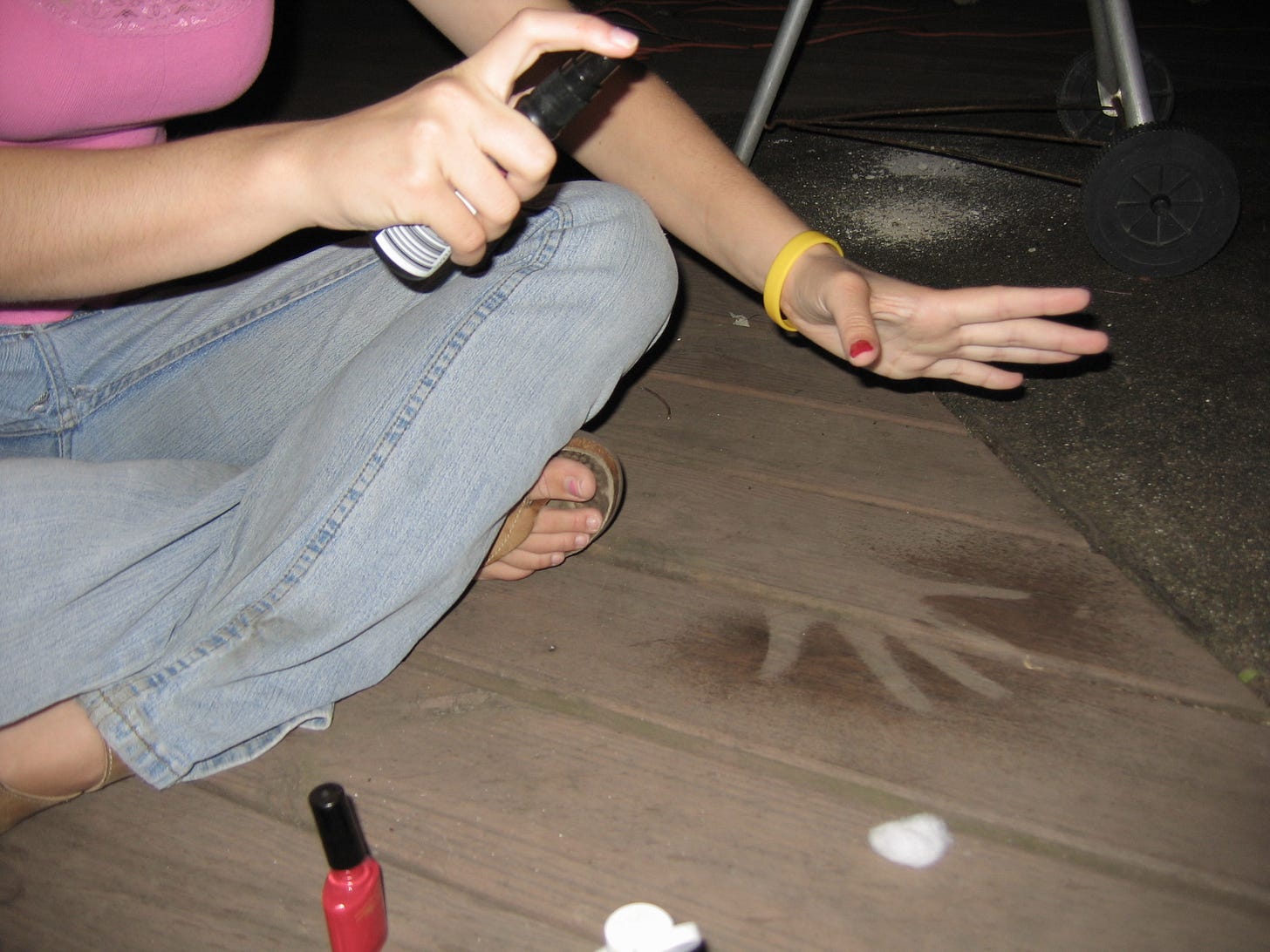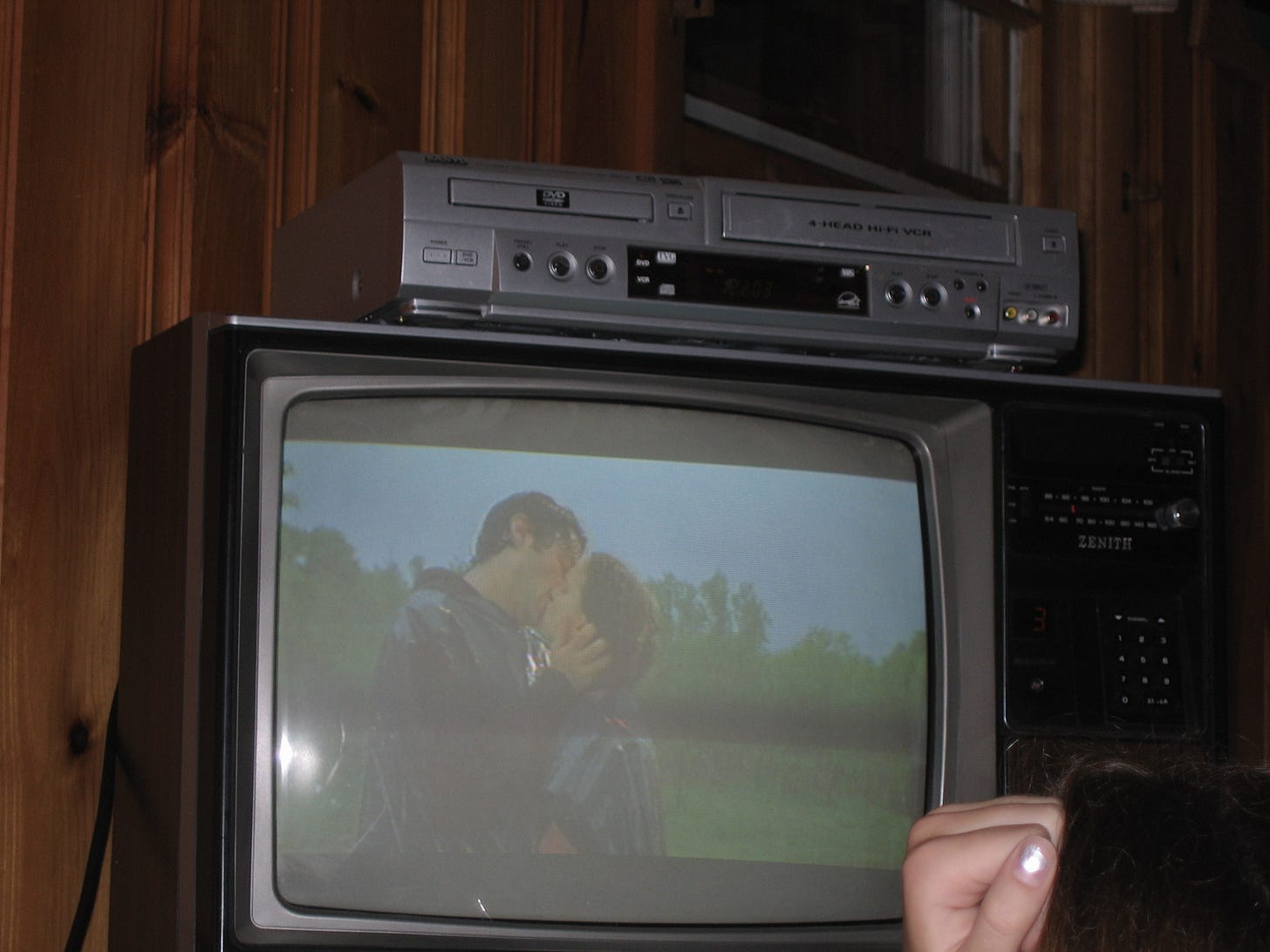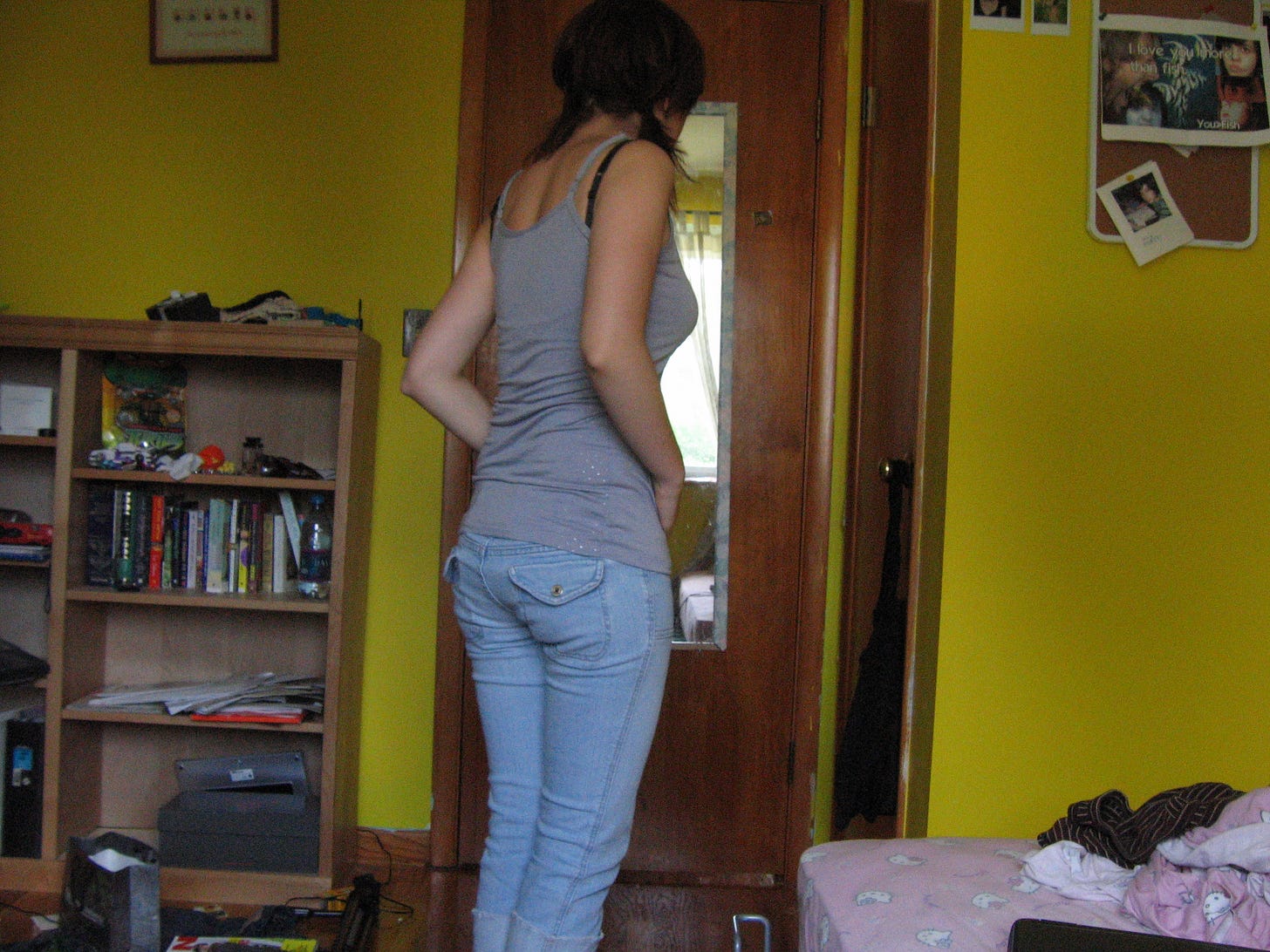Hello and welcome back to my portal. It’s a new year and I kind of thought things would have gotten off to a more rocking start than they actually have. Instead, I feel like I’m sluggishly grasping at a routine. I come to you still in bed after opening a rejection email. Time is a construct, rejection is part of the process, and all of the other things I tell myself to feel better.

As last year came to a close, I noticed a rise in discussions around the term “girl” online. Perhaps 2023 was the year that the broader culture became aware of the girl: girl dinner; clean/that girl; rat girl; hot girl walks; girl clutter… Putting little bows on just about everything. What followed were a lot of tweets and think pieces that attempted to make a distinction between women and girls online. They asked us: why do all of these grown women want to be girls? They framed it as a failing, or a resistance against the oppressive girl boss (the term girl still applies here), or a fear of aging. Who gets to be a girl? When does one stop being a girl?
Online, there is no woman/girl dichotomy. Online, we are all girls. Here, the term girl exists as a condition rather than a defined gender or age. “Girl” is a valuable marketing term in the same way that “authenticity” is. It is both hoisted upon us and impossible to actually embody. This is well-tread territory that I encourage you to read more about if you’re interested: Tiqqun; Long Chu; Warren-Crow; Walsh.

I turn 35 in a few weeks. My desires, my feelings of lack, and my consumption habits implicate me—I’m wading through Girl Internet. You probably are too. It’s a space that is at once coveted and ridiculed. I sip from a hot pink Stanley cup that my boyfriend got me for Christmas, the same one that high schoolers carry to and from their classes. 13-year-olds and I shop side-by-side for the same skincare products at my nearest Sephora. I scroll TikTok and get dating advice meant for someone at least a decade younger than me. We’re all sharing the Internet. Platforms like TikTok, which have the power to make micro-celebrities out of old women going out to eat or tweens hauling thousands of dollars worth of luxury goods via the app’s For You page make this even more apparent. Our anxieties and aspirations bleed into one another, whether or not they actually apply to our individual lives.
When I first started being a girl online, 20 years ago, everyone else was my age, too. Of course, we were warned not to meet up with strangers (decidedly older men) from AOL chat rooms, but I was generally posting for and following other teenagers. Now, not only am I sharing the Internet with today’s youth, I’m sharing the Internet with the girl I was online 20 years ago and every subsequent age and iteration since then.

Most of my early online interactions have been lost due to the natural decay of the Internet. Images once uploaded to LiveJournal (using services like tinypic and Photobucket) are now broken links. Platforms I visited daily have been wiped completely. Somehow, my hard drive from high school still works. It’s a clunky Western Digital “My Book” external drive that needs to be plugged into an outlet and turned on before being plugged into a computer. It suffered a crash, or some sort of formatting issue, long ago. All of the files are mixed together, labeled only by their dimensions and shuffled into folders with nondescript names such as “JPEG10.”
I revisit the hard drive and its contents often. I’ve always valued being able to access these memories; the lens I view them through, however, has changed over the years. A recent past is embarrassing, a less-so-recent past is boring, and a more distant past is exciting again. Trending interest in y2k-era aesthetics (and the rise in shooting with early 2000s digital cameras) has given the photos I took in high school a new sheen. Last year, I repurchased the camera I grew up taking photos with, a Canon Powershot A95.
Re-re-rediscovering these photos has resulted in a new vision boarding project: haircutsfolder. The piece is ongoing. Hosted on Tumblr, I slowly upload a few images from my hard drive each time I log onto the platform. Most of the photos I’ve chosen to make public were most likely never public to begin with. I would have deemed them too boring or badly composed—the subject wasn’t looking at the camera or it was just a picture of my messy room. Now, the “boring” images are the most interesting: a bottle of Marc Jacobs Daisy perfume on my bookshelf; a tv with the movie Garden State playing on it; a suburban crosswalk; a faceless friend sitting on a leather couch inside of an American Eagle store.
Amongst these photos are pictures of girls I had saved to my secret “haircuts” folder. Those early inklings of desire to look like someone else were crystalized in the haircuts folder. They were the first aspirational content I consumed. Like my jumbled hard drive, the photos I took and the images I wanted to embody are touching each other. The girls from my haircuts folder are often the only ones whose faces are exposed. I opted to only choose photos of my friends whose faces are obscured in case it made them uncomfortable. I don’t even post that many of myself with my face visible, mostly because I want the vision board to feel anonymous, nondescript. No image alone is that interesting. Together they feel animated, like a pile of photos on the floor overlapping each other, shifting and revealing something new every time an image gets uploaded.
On my feed, simulated y2k party photos of the moment bleed into my 14-year-old sleepover documentation which bleed into the photos of girls I once wanted to be which have morphed into photos of new girls I might want to be. They are taken on the same camera, and are then dragged to my desktop. Desire bends over backwards on itself, multi-pronged and twisting. The girl is present in each image. I am 14 and 34 all at once.





this was such a peacefully nostalgic read—the eternal girlhood of growing up online and having all your past ages collapse into the present moment!
“Sluggishly grasping at a routine” yes same